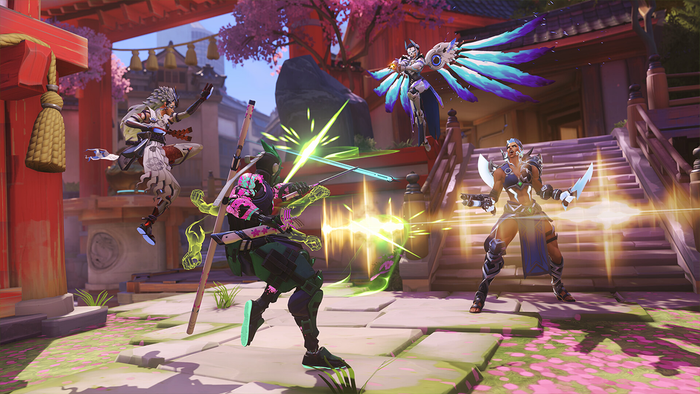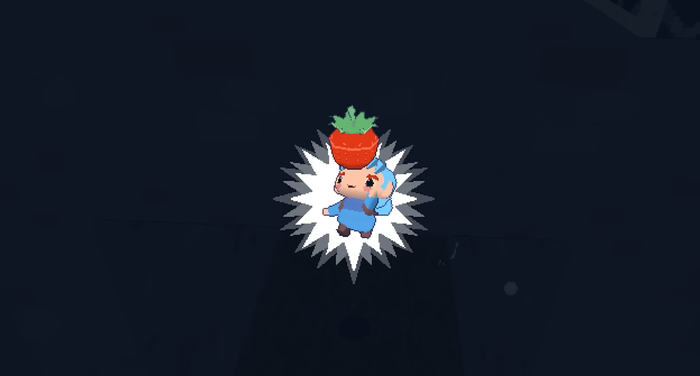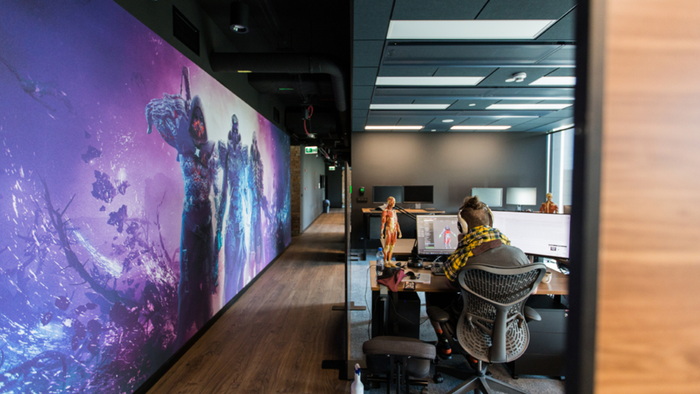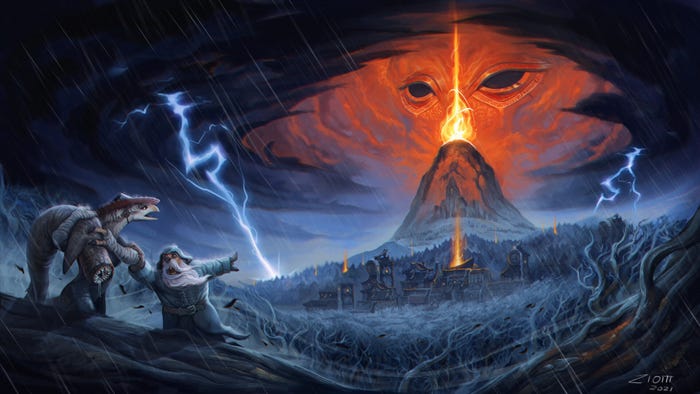The developers behind critically-acclaimed titles such as Knytt Underground, NightSky, and Spin The Bottle commit to the Wii U for the suspenseful Affordable Space Adventures.

When you consider the games that KnapNok (B.U.T.T.O.N., Spin The Bottle) and Nifflas (Knytt Underground, NightSky) have made, it might be hard to imagine them working on a game together, but that's part of what makes their new project, Affordable Space Adventures for the Wii U due later this year, so enticing. Nifflas has created some of the most iconic and atmospheric puzzle platformers, whereas KnapNok Games has won awards for their games which focus on new interfaces and concerned themselves with what players do in front of the TV. Their Wii U project, revealed only today, has already earned the support of the Danish Film Institute, and their charming if not claustrophobic teaser hints that their combined passions and expertise may pay off. What is not apparent from the video is the game's extensive use of the Wii U GamePad. Nicklas 'Nifflas' Nygren and KnapNok's Dajana Dimovska and Lau Korsgaard discuss how they designed a technical game using the second screen, and comment on the benefits of developing for a single hardware platform. What kind of experience do you aim to create with your game? Lau: To create an atmospheric, low-key, very suspenseful game that gets the players excited but a bit scared at the same time, and to have a game where a complex configurable vehicle is fun to figure out and control. Also to create a form of technical stealth puzzles that aren't very common in games, where stopping to think about each scenario is just as important as the execution. A lot of the ship is controlled with the GamePad's touch screen. Can you tell me about your design choices and iterations on the second screen? Nifflas: The first iteration of the second screen was just to try to show as many internal things about the ship as directly as possible. It looked more or less like the below mockup. Problem was, the interface didn't indicate what information was relevant and when, and it was far too overwhelming for most testers.  old interface Now Simon Nielsen (the artist from KnapNok Games) has been in charge of making a new iteration of the interface that communicates the personality of the spaceship better and abstracts a lot of the raw information to something much more understandable. We have more or less settled on sticking to this iteration of the interface (below), but there are many tweaks to be made to it and lots of playtesting ahead.
old interface Now Simon Nielsen (the artist from KnapNok Games) has been in charge of making a new iteration of the interface that communicates the personality of the spaceship better and abstracts a lot of the raw information to something much more understandable. We have more or less settled on sticking to this iteration of the interface (below), but there are many tweaks to be made to it and lots of playtesting ahead.  current interface What has playtesting told you about the second screen and your game design so far? Lau: Some mechanics have been harder to teach than we thought. Learning to scan enemies and configure the ship to avoid detection has by far been the hardest part. We crammed too much learning into a way too short area. Now we're extending this area in order to teach each step of the scanning/hiding process in small steps. Then we'll playtest that! On the other hand, some other things we thought might be problematic for the player to learn have strangely been super obvious, like a part where you have to push the fuel thruster to the max in order to move an object. Every tester has quickly realized that the ship started to burn because the fuel thruster was on max and responded by quickly lowering the thrust before the ship explodes (some players were too late and died, but that's okay). Of course, nobody knows before this point that the ship can overheat, so turning down the thruster has been kind of a panic move for every player. Because we're evil, this is secretly what we want to happen. Since the action never pauses when the player stares at the second screen, is the goal for the player to eventually memorize the GamePad UI? Nifflas: It'll be important to pay a lot of attention to the UI. You also get lots of information from it about dangers. There will be some shortcuts, but the aim isn't to not have to look at the UI. We aim to design puzzles that can be executed elegantly by only changing the ship's configuration at safe locations with no time pressure. In occasions where actions need to be made while flying, the player should never have to jump between two different sub-menus. What made you decide to stick with the single-touch input constraint of the GamePad? Nifflas: It'd definitely be cooler with a multitouch controller, but the Wii U with its controller that has both a big touchscreen and buttons/thumbsticks is by far the most suitable hardware on the market for what we want to do with this game.
current interface What has playtesting told you about the second screen and your game design so far? Lau: Some mechanics have been harder to teach than we thought. Learning to scan enemies and configure the ship to avoid detection has by far been the hardest part. We crammed too much learning into a way too short area. Now we're extending this area in order to teach each step of the scanning/hiding process in small steps. Then we'll playtest that! On the other hand, some other things we thought might be problematic for the player to learn have strangely been super obvious, like a part where you have to push the fuel thruster to the max in order to move an object. Every tester has quickly realized that the ship started to burn because the fuel thruster was on max and responded by quickly lowering the thrust before the ship explodes (some players were too late and died, but that's okay). Of course, nobody knows before this point that the ship can overheat, so turning down the thruster has been kind of a panic move for every player. Because we're evil, this is secretly what we want to happen. Since the action never pauses when the player stares at the second screen, is the goal for the player to eventually memorize the GamePad UI? Nifflas: It'll be important to pay a lot of attention to the UI. You also get lots of information from it about dangers. There will be some shortcuts, but the aim isn't to not have to look at the UI. We aim to design puzzles that can be executed elegantly by only changing the ship's configuration at safe locations with no time pressure. In occasions where actions need to be made while flying, the player should never have to jump between two different sub-menus. What made you decide to stick with the single-touch input constraint of the GamePad? Nifflas: It'd definitely be cooler with a multitouch controller, but the Wii U with its controller that has both a big touchscreen and buttons/thumbsticks is by far the most suitable hardware on the market for what we want to do with this game.  I can see the atmospheric, exploration influences from Nifflas' games. What lessons from, say, Spin The Bottle are helping shape Affordable Space Adventures? Lau: They are two very different games, but I also see some clear connections. When we design games for motion controllers and other new interfaces we almost spend as much time sketching and describing the play situation than the action on screen. How the player look and feel when they play the game is just as important than how the game look and feel. In Spin the Bottle, the look and feel of the player was silliness and embarrassment where in Affordable Space Adventures the players looks and feelings should balance between bad ass controlling a complicated spaceship and then fear, panic and failure - the principle is still the same. You've told me the game could work as a multiplayer game, but isn't it primarily a single player game? How do you make sure both modes of play work? Nifflas: Luckily, things seem to balance itself in a pretty neat way here. It plays nicely in single player, but it will be quite difficult as the player will both have to keep track of the ship's systems while flying the ship. In local multiplayer, puzzles will potentially be a bit easier to solve since you are two people who can talk about them, but to execute those solutions both players needs to be coordinated and agree what to do and how, which instead results in a different sort of difficulty. The way we can make sure both work is as always to do lots of playtesting and iterate! In your press materials, you say the game will utilize the potential of the Wii U hardware. How so? Lau: This is mostly the GamePad we are talking about here. I think we have seen very few games, also from Nintendo themselves, that actually uses the GamePad in a meaningful way. Hopefully we can show that the Wii U is great, and it can give you experiences you can't get anywhere else as long as developers dare to design something exclusive for the hardware. Speaking of hardware exclusives, we are seeing more and more developers port or go multiplatform. Why aren't you following this trend? Lau: I don't mind multiplatform releases; for some games it makes sense. Nevertheless, as long as we try to make our games work on all platforms we will limit ourself to a subset of the possible interactions and mechanics. It is a special feeling playing a game designed specifically for the hardware, such as Frobisher Says for PS Vita or GoldenEye for Nintendo 64. These are games that are defined by the hardware, but at the same time games that define the hardware. We, the players, treasure these games because they reassure us why we have invested in this particular piece of machinery. Dajana Dimovska: We like to challenge the traditional way of designing games. Technology and interfaces evolve, and game design should eveolve with them. New platforms and interfaces give an oportunity to think and design novel games, and we love that approach to design. Wii U is one of these platforms; the combination of motion controllers, secondary screen, touch screen, camera, thumb sticks and buttons gives so many oportunities for new and creative designs. We never design a game and then just try to somehow fit it to a platform. We take each platform serious, and we try to design a game that really tries to embrace the advantages of the platdorm itself. We had that approach when designing Spin the Bottle, and we are doing the same when designing the Spaceship game. Porting Spin the Bottle to another platform is not a straight foreard procedure, all the minigames will have to be redesigned and new [ones] will have to be designed. The same is the case with Affordable Space Adventures: porting to a different platform than Wii U will require redesigning the game interface and potentially some of the mechanics. So even though Nifflas brought Knytt Underground to the PlayStation family, we won't see this project also pop up as a PS Vita-plus-console game soon? Nifflas: I honestly don't know, but apart from the Wii U, the PS4+Vita combo is the only system on the market that this game would run on super nicely without us having to drastically change the mechanics of the ship computer. I must ask: what's the business rationale for developing exclusively for the Wii U, given its struggling hardware sales? Nifflas: I have no idea :) I just want to make a cool game for it! Lau: Ha ha, yeah, if we wanted to earn money I guess we shouldn't be in games. It is really hard to make any sensible business rationales in this market. Yes, there are not that many Wii U consoles out there, but does it matter if there are 5 or 10 million units sold when we just need to sell some 10-20-30 thousand copies to be happy? As long as we keep our cost low, I think it is much more important to work on a platform that excites us than to work on the stuff that everybody else is doing. What plans do you have to make this game playable to a wider audience? Lau: A demo will be playable at the GDC Play booth PL406 March 19th to 21st and at The Media Indie Exchange March 17th in San Francisco.
I can see the atmospheric, exploration influences from Nifflas' games. What lessons from, say, Spin The Bottle are helping shape Affordable Space Adventures? Lau: They are two very different games, but I also see some clear connections. When we design games for motion controllers and other new interfaces we almost spend as much time sketching and describing the play situation than the action on screen. How the player look and feel when they play the game is just as important than how the game look and feel. In Spin the Bottle, the look and feel of the player was silliness and embarrassment where in Affordable Space Adventures the players looks and feelings should balance between bad ass controlling a complicated spaceship and then fear, panic and failure - the principle is still the same. You've told me the game could work as a multiplayer game, but isn't it primarily a single player game? How do you make sure both modes of play work? Nifflas: Luckily, things seem to balance itself in a pretty neat way here. It plays nicely in single player, but it will be quite difficult as the player will both have to keep track of the ship's systems while flying the ship. In local multiplayer, puzzles will potentially be a bit easier to solve since you are two people who can talk about them, but to execute those solutions both players needs to be coordinated and agree what to do and how, which instead results in a different sort of difficulty. The way we can make sure both work is as always to do lots of playtesting and iterate! In your press materials, you say the game will utilize the potential of the Wii U hardware. How so? Lau: This is mostly the GamePad we are talking about here. I think we have seen very few games, also from Nintendo themselves, that actually uses the GamePad in a meaningful way. Hopefully we can show that the Wii U is great, and it can give you experiences you can't get anywhere else as long as developers dare to design something exclusive for the hardware. Speaking of hardware exclusives, we are seeing more and more developers port or go multiplatform. Why aren't you following this trend? Lau: I don't mind multiplatform releases; for some games it makes sense. Nevertheless, as long as we try to make our games work on all platforms we will limit ourself to a subset of the possible interactions and mechanics. It is a special feeling playing a game designed specifically for the hardware, such as Frobisher Says for PS Vita or GoldenEye for Nintendo 64. These are games that are defined by the hardware, but at the same time games that define the hardware. We, the players, treasure these games because they reassure us why we have invested in this particular piece of machinery. Dajana Dimovska: We like to challenge the traditional way of designing games. Technology and interfaces evolve, and game design should eveolve with them. New platforms and interfaces give an oportunity to think and design novel games, and we love that approach to design. Wii U is one of these platforms; the combination of motion controllers, secondary screen, touch screen, camera, thumb sticks and buttons gives so many oportunities for new and creative designs. We never design a game and then just try to somehow fit it to a platform. We take each platform serious, and we try to design a game that really tries to embrace the advantages of the platdorm itself. We had that approach when designing Spin the Bottle, and we are doing the same when designing the Spaceship game. Porting Spin the Bottle to another platform is not a straight foreard procedure, all the minigames will have to be redesigned and new [ones] will have to be designed. The same is the case with Affordable Space Adventures: porting to a different platform than Wii U will require redesigning the game interface and potentially some of the mechanics. So even though Nifflas brought Knytt Underground to the PlayStation family, we won't see this project also pop up as a PS Vita-plus-console game soon? Nifflas: I honestly don't know, but apart from the Wii U, the PS4+Vita combo is the only system on the market that this game would run on super nicely without us having to drastically change the mechanics of the ship computer. I must ask: what's the business rationale for developing exclusively for the Wii U, given its struggling hardware sales? Nifflas: I have no idea :) I just want to make a cool game for it! Lau: Ha ha, yeah, if we wanted to earn money I guess we shouldn't be in games. It is really hard to make any sensible business rationales in this market. Yes, there are not that many Wii U consoles out there, but does it matter if there are 5 or 10 million units sold when we just need to sell some 10-20-30 thousand copies to be happy? As long as we keep our cost low, I think it is much more important to work on a platform that excites us than to work on the stuff that everybody else is doing. What plans do you have to make this game playable to a wider audience? Lau: A demo will be playable at the GDC Play booth PL406 March 19th to 21st and at The Media Indie Exchange March 17th in San Francisco.
About the Author(s)
You May Also Like









